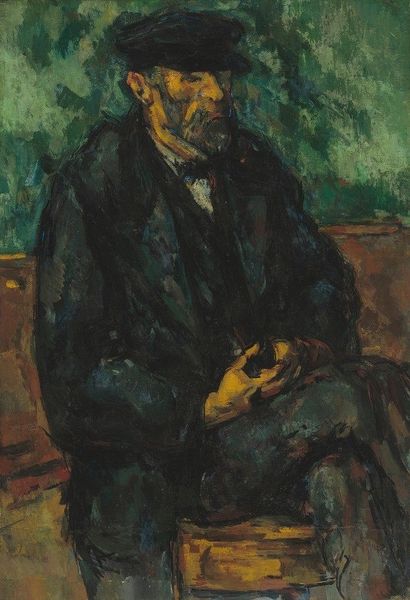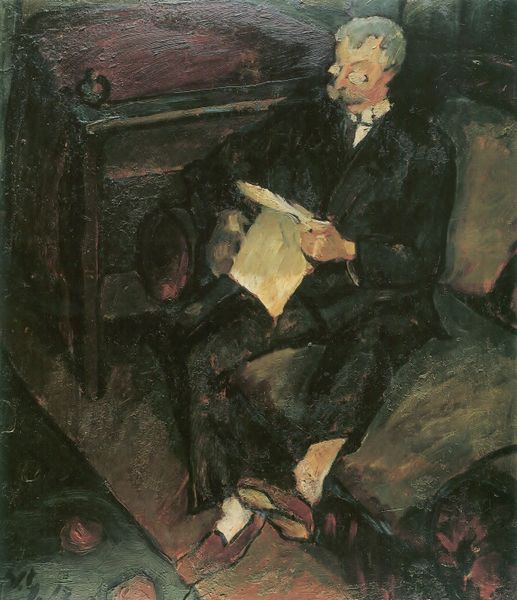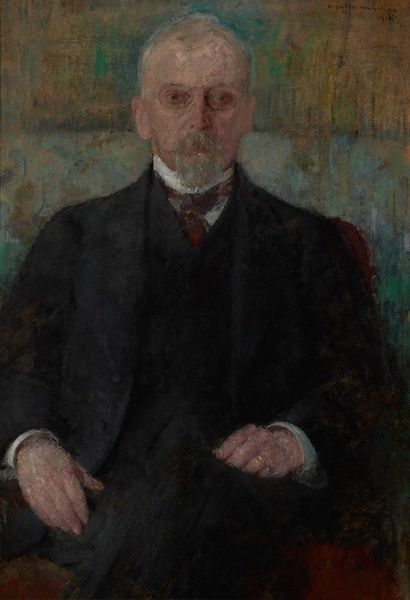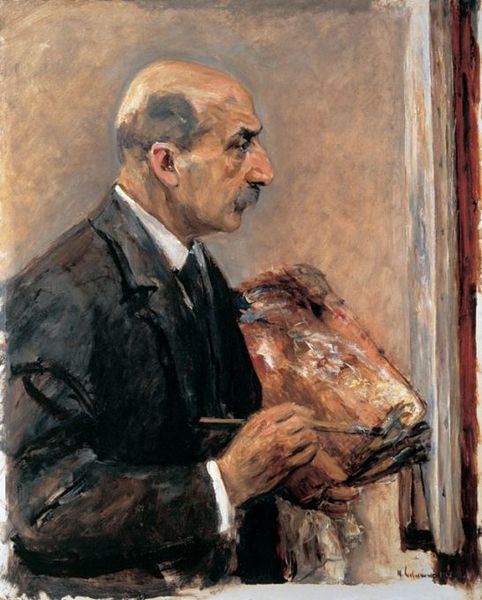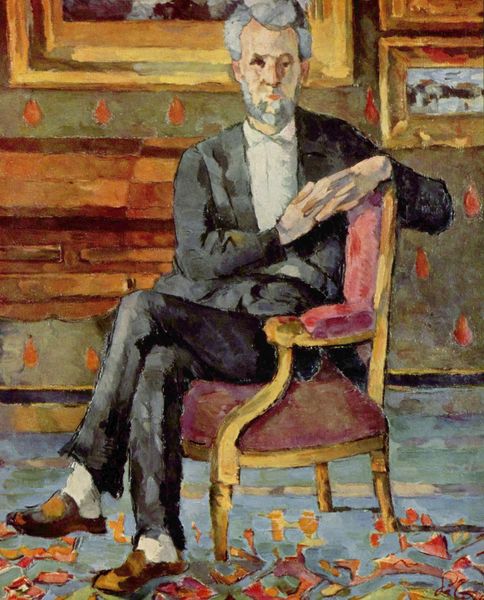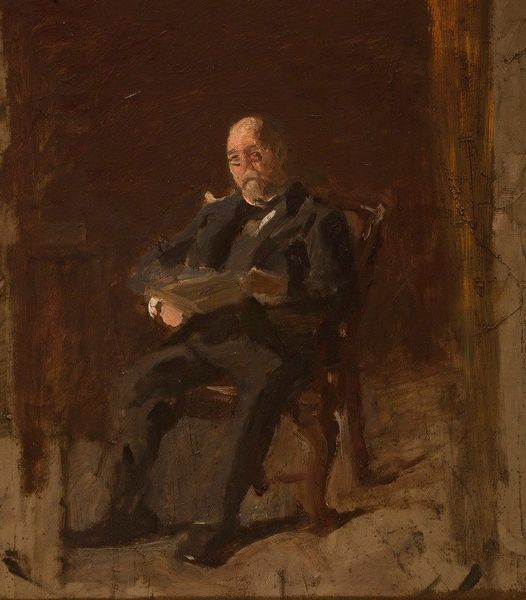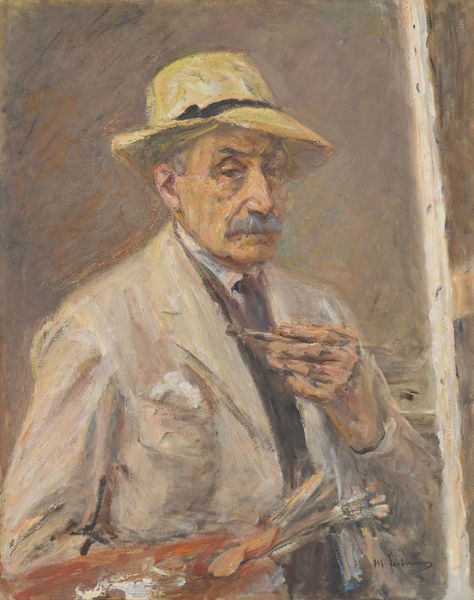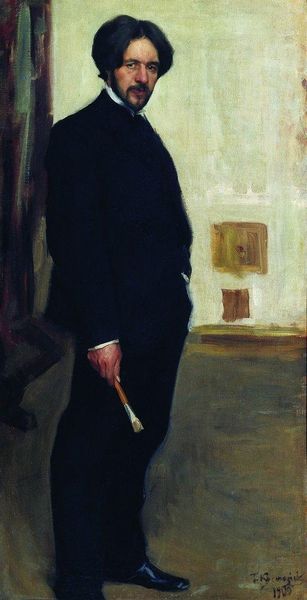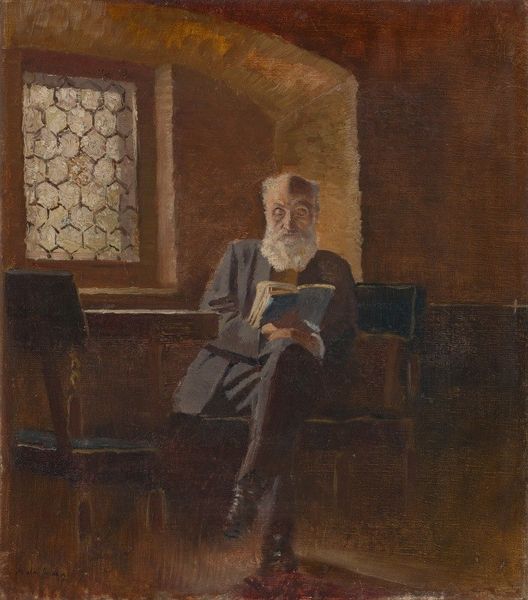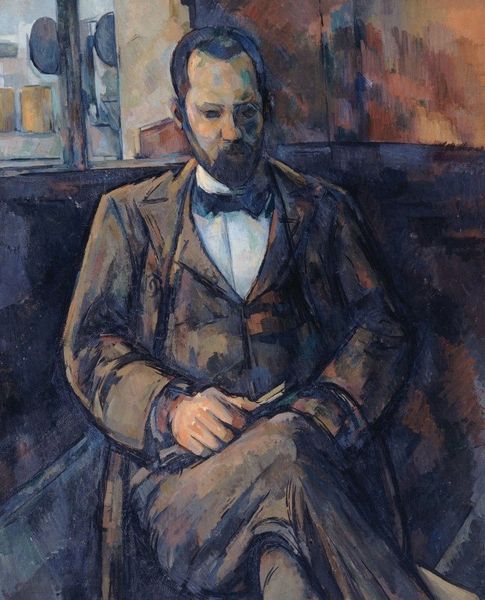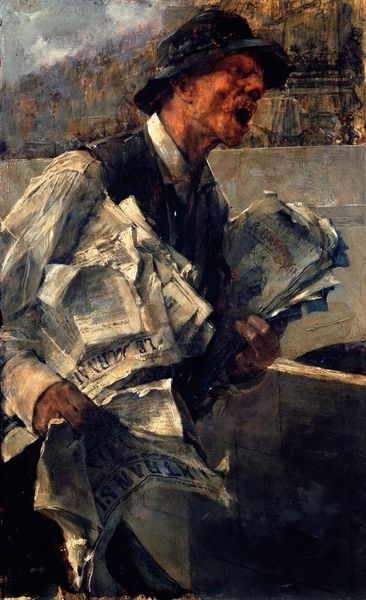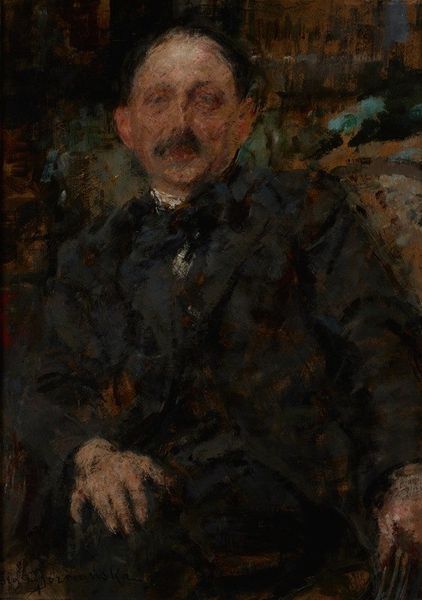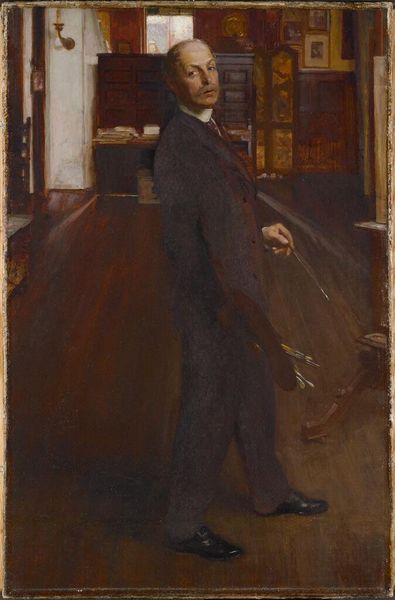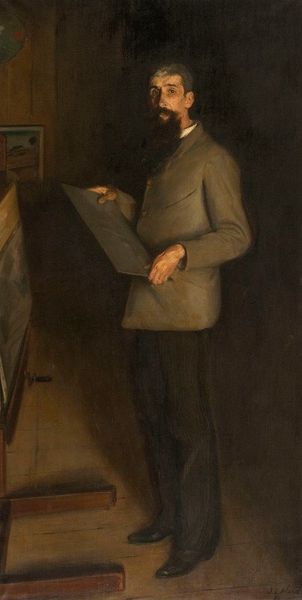
oil-paint, impasto
#
portrait
#
figurative
#
self-portrait
#
oil-paint
#
oil painting
#
impasto
#
expressionism
#
portrait art
#
modernism
Copyright: Public Domain: Artvee
Curator: Before us, we have Max Liebermann's 1923 "Self-Portrait in a Suit in Front of the Easel, Full Figure." Editor: Immediately, I'm struck by the rather somber palette. It feels contemplative, even a bit weary. Lots of brown and grays. Curator: Liebermann utilizes impasto techniques heavily. Notice the palpable texture of the oil paint, especially in areas defining the face and clothing, suggesting a deep involvement with the materiality of painting itself. This intense focus also invites analysis in terms of labor: Liebermann depicts himself in the midst of work, presenting artistic creation as labor. Editor: Interesting. For me, it's the pose itself. He's presenting himself in this rather formal attire. What does the suit symbolize here? Perhaps a conscious effort to elevate the status of the artist or a visual signifier for public recognition. Also, what is absent from the canvas on the easel? It appears unpainted, yet the painter himself appears composed and confident, an emblem of progress as a subject. Curator: Well, consider also the broader socio-political context. This work was created during the Weimar Republic, a period of immense social and economic upheaval in Germany. Liebermann, as a prominent Jewish artist, certainly would have been negotiating his identity within a changing cultural landscape. The formality could represent his established position versus more experimental modern movements in reaction against old masters. Editor: That resonates when considering Liebermann’s positioning as an establishment figure grappling with emergent Expressionist and Dadaist movements. In this regard, perhaps it is not simply a self-portrait, but rather an introspective reflection on artistic legacy, an iconography for a mature, contemplative artistic sensibility facing uncertain times. Curator: The way he presents himself really focuses my attention to his role as a professional. One wonders what materials he might have selected, who was supplying him, how his studio was set up to enhance this mode of work. Editor: And the portrait itself – how might he wish to be seen and understood? In short, Liebermann presents a loaded depiction for the future’s view. Curator: A picture of its time as a visual record of material existence. Editor: A rich dialogue between artist, symbol, and societal forces.
Comments
No comments
Be the first to comment and join the conversation on the ultimate creative platform.
